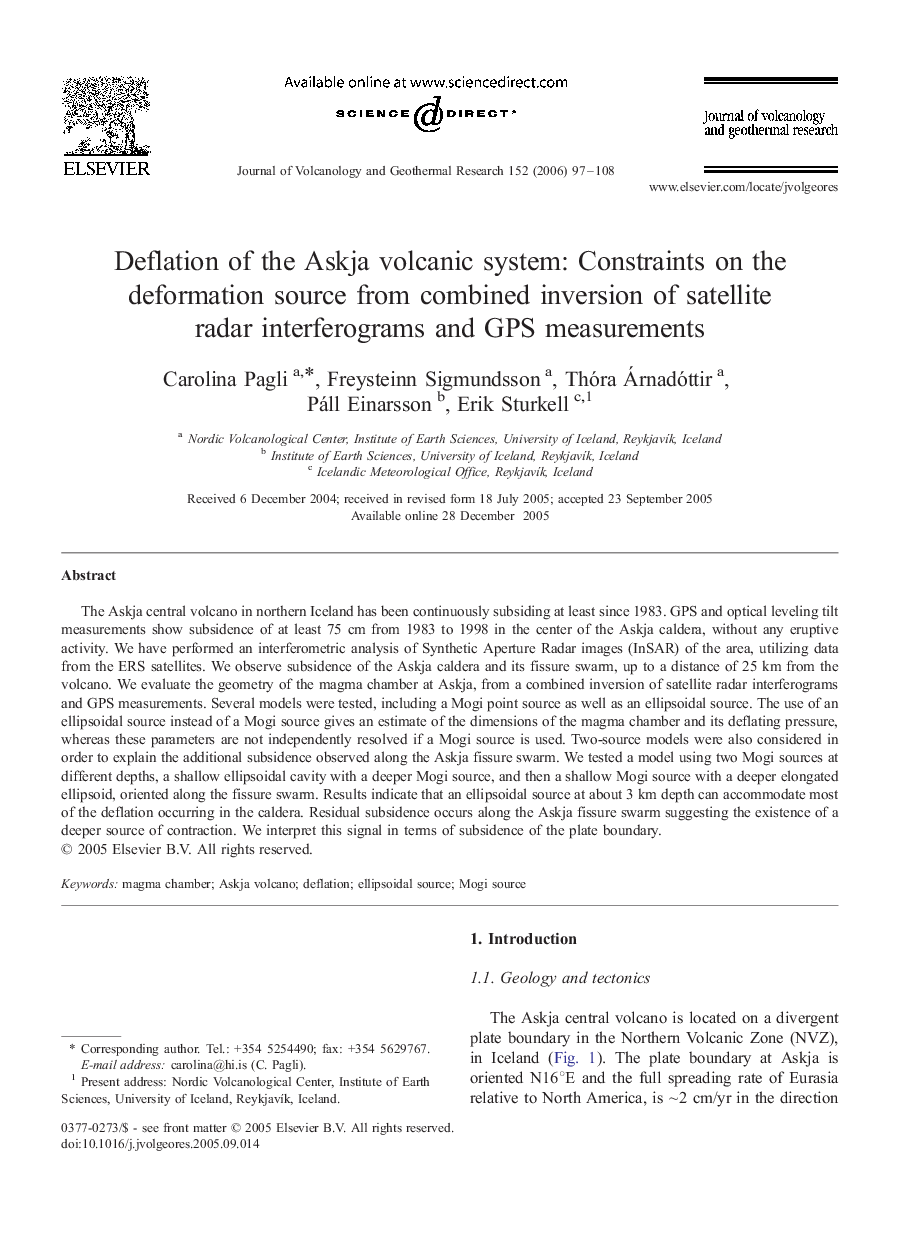| Article ID | Journal | Published Year | Pages | File Type |
|---|---|---|---|---|
| 4715142 | Journal of Volcanology and Geothermal Research | 2006 | 12 Pages |
The Askja central volcano in northern Iceland has been continuously subsiding at least since 1983. GPS and optical leveling tilt measurements show subsidence of at least 75 cm from 1983 to 1998 in the center of the Askja caldera, without any eruptive activity. We have performed an interferometric analysis of Synthetic Aperture Radar images (InSAR) of the area, utilizing data from the ERS satellites. We observe subsidence of the Askja caldera and its fissure swarm, up to a distance of 25 km from the volcano. We evaluate the geometry of the magma chamber at Askja, from a combined inversion of satellite radar interferograms and GPS measurements. Several models were tested, including a Mogi point source as well as an ellipsoidal source. The use of an ellipsoidal source instead of a Mogi source gives an estimate of the dimensions of the magma chamber and its deflating pressure, whereas these parameters are not independently resolved if a Mogi source is used. Two-source models were also considered in order to explain the additional subsidence observed along the Askja fissure swarm. We tested a model using two Mogi sources at different depths, a shallow ellipsoidal cavity with a deeper Mogi source, and then a shallow Mogi source with a deeper elongated ellipsoid, oriented along the fissure swarm. Results indicate that an ellipsoidal source at about 3 km depth can accommodate most of the deflation occurring in the caldera. Residual subsidence occurs along the Askja fissure swarm suggesting the existence of a deeper source of contraction. We interpret this signal in terms of subsidence of the plate boundary.
